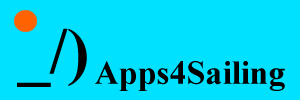The Disadvantages and Sailing Terms
Disadvantages— In serious wind and seas, a monohull sailor can, if absolutely exhausted and no longer able to steer, strike all sail, lock all hatches, and go below to wait it out and hope for the best. A well-found boat will most likely allow this. The boat will roll around like a cork, and even if it rolls 360 degrees it should be ok, as long as the mast doesn’t break off and put a hole in the boat. A Multihull in huge seas, however, must always have a helmsman, or some other way to keep the boat pointed into the waves. Without this, the boat will end up in the wave troughs, with the waves beam on; this is an invitation to capsize. Knowing this, the ocean going sailor should be prepared with a parachute sea anchor and with attachment points for it on the boat that are absolutely bombproof. Properly deployed, a parachute anchor will allow a multihull to ride out a hurricane in near comfort, as it keeps the bows pointed into the wind and waves and with several hundred feet of line led out to the sea anchor, there is no jerking or lunging on the line. Once the sea anchor is properly set, the crew can go below and safely wait out the storm. This assumes that there are no dangers, such as a landmass or reef systems, lying in wait downwind. Plenty of sea room is needed for these manuevers.
Marinas— Finding space in a marina for a multihull is not nearly as easy as it is for a monohull. They require either an end space or a double berth, which will likely cost more than a single.
Weight constraints — Since a multihull sits on the water instead of in it, unlike a keel boat, the payload, or weight carrying capacity of the boat, can not safely be exceeded. A catamaran, with essentially two full boats in the water, can carry more weight than a trimaran of the same length, which consists of one full hull and two floats. A 35 foot monohull can carry much more weight in stores and equipment than a 35 foot trimaran, and this is a consideration when provisioning a boat for cruising. The cruiser in a small multihull may find himself reprovisioning along the way more often than the cruiser in a small monohull.
Trailerability— Large multihulls cannot be shipped over the road, due to their wide beam. Only some of the smaller, folding designs will allow trailering.
Haulouts also can be more complicated for multihulls. There are yards that have travelifts wide enough for them, or cranes to lift them, or railways to pull them out of the water on tracks, but these yards are fewer and farther between than those that can’t handle the extra wide beam.
Conclusions — It seems that outside of a couple of minor inconveniences, a multihull is the only boat that makes any sense. If this is the case, why doesn’t everyone have one? There are a couple of reasons. One is the unfortunate reputation they earned early on in their evolution. The other is the expense involved in achieving ownership of a quality cat or tri. These boats are expensive to build, whether as one offs or as production models. With a trimaran, 3 hulls (amas) and crossarms (akas) to connect them all together are needed. For production this requires expensive tooling up for a company to invest in even before they ever get a boat on line. There are also a lot more materials needed to build two or three hulls than are needed for the one finished hull of a keel boat.
Other than a production model the buyer has the option of having one custom built by a reputable yard or of building it himself. Neither of these options is cheap, fast, or easy.
There are used multihulls on the market, and there are a lot of good ones out there. There are also a lot of not so good ones. It’s critical to hire an experienced multihull surveyor to be assured that the boat was built and maintained properly and is sound.
Sailing Terms
Amas-The outboard hulls of a trimaran.
Ballast-A weight at the bottom of a boat to keep it stable. Ballasts can be placed inside the hull of the boat or externally in a keel.
Beam– The widest part of a boat.
Draft– The depth of a boat, measured from the deepest point to the waterline. The water must be at least this depth, or the boat will run aground.
Catamaran-A twin-hulled boat. Catamaran sailboats are known for their ability to plane and are faster than single-hulled boats in some conditions.
Hatch-A sliding or hinged opening in the deck, providing access to the cabin or space below.
Heel-When a boat tilts away from the wind, caused by wind blowing on the sails and pulling the top of the mast over. Some heel is normal when under sail.
Monohull-A boat that has only one hull, as opposed to multihull boats such as catamarans or trimarans. Multihull-Any boat with more than one hull, such as a catamaran or trimaran.
Payload– Weight carrying capacity of the boat.
Trimaran-A boat with a center hull and two smaller outer hulls.

